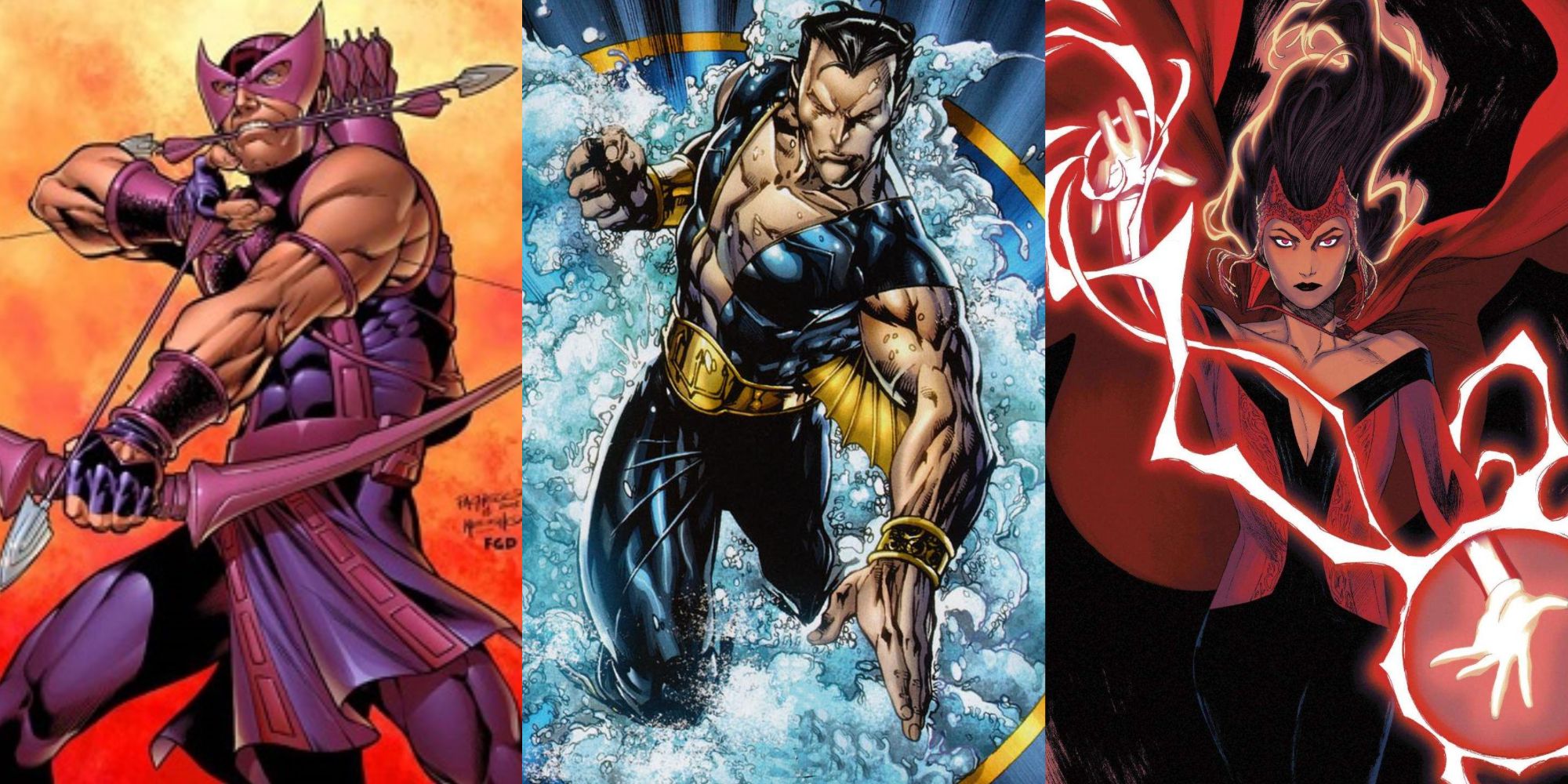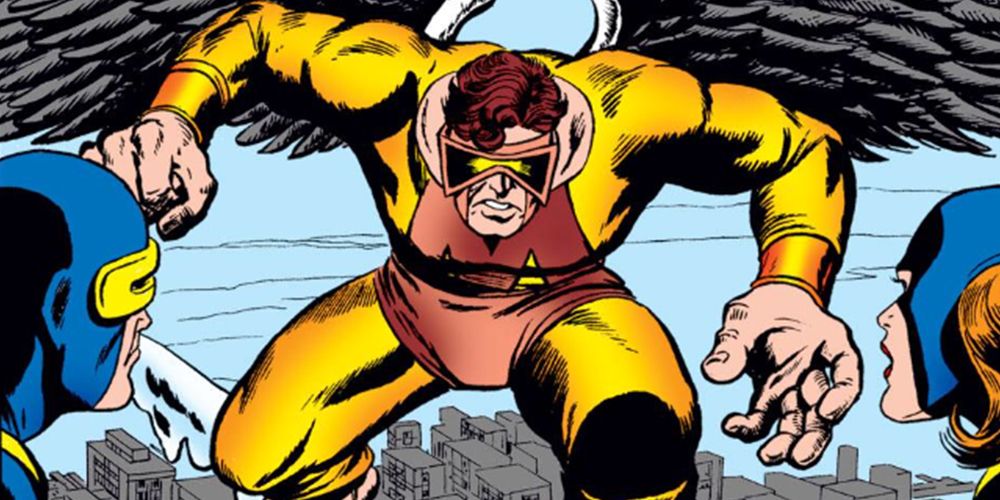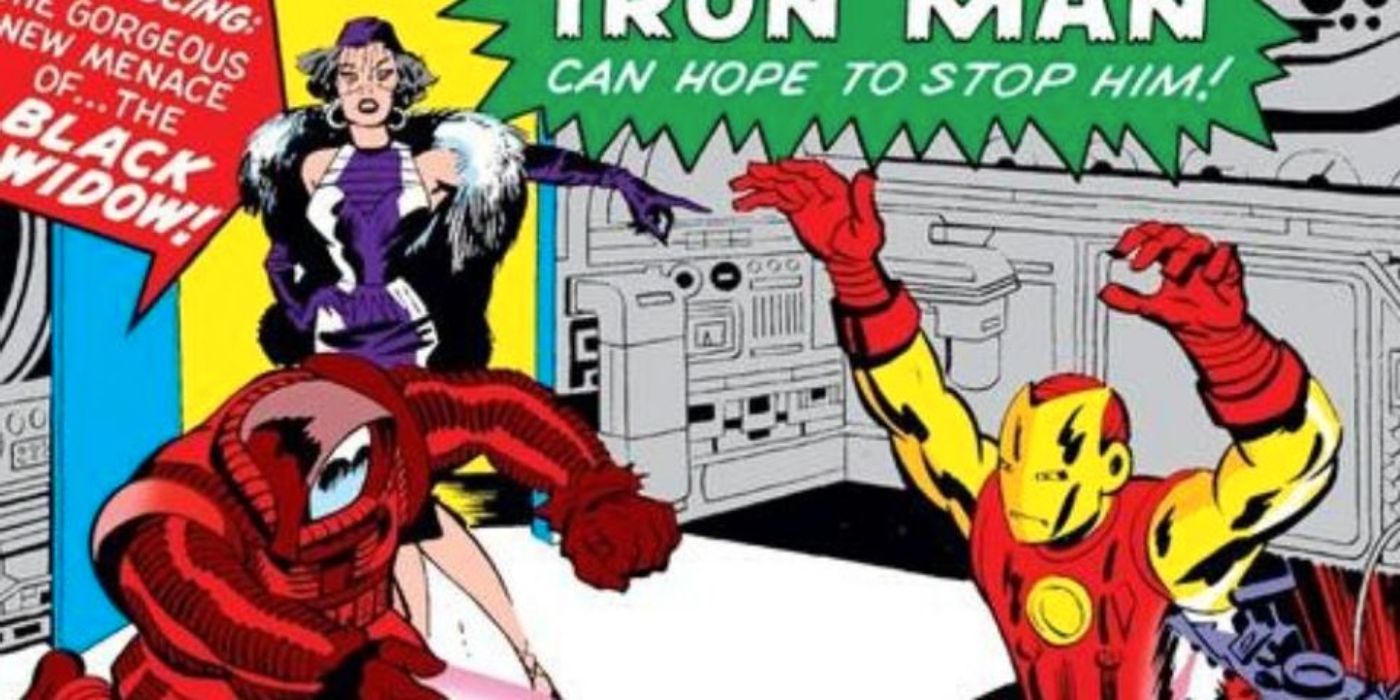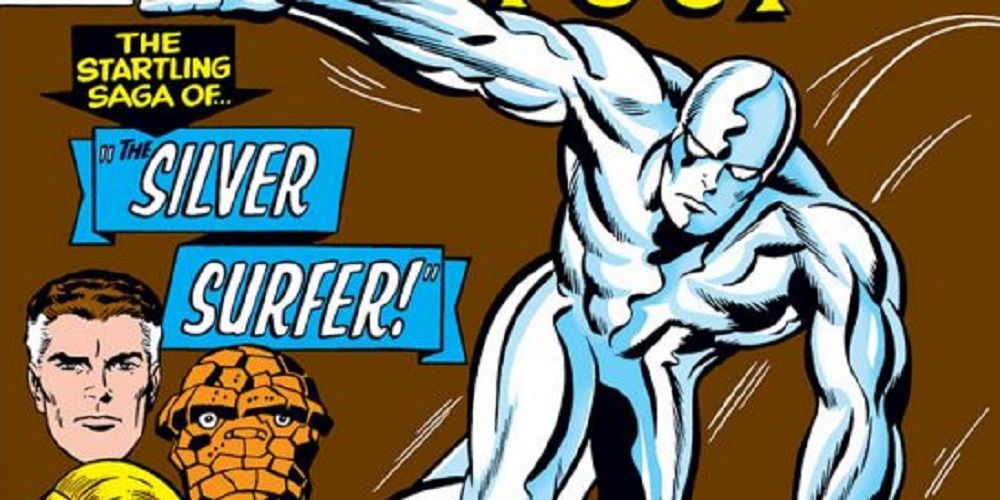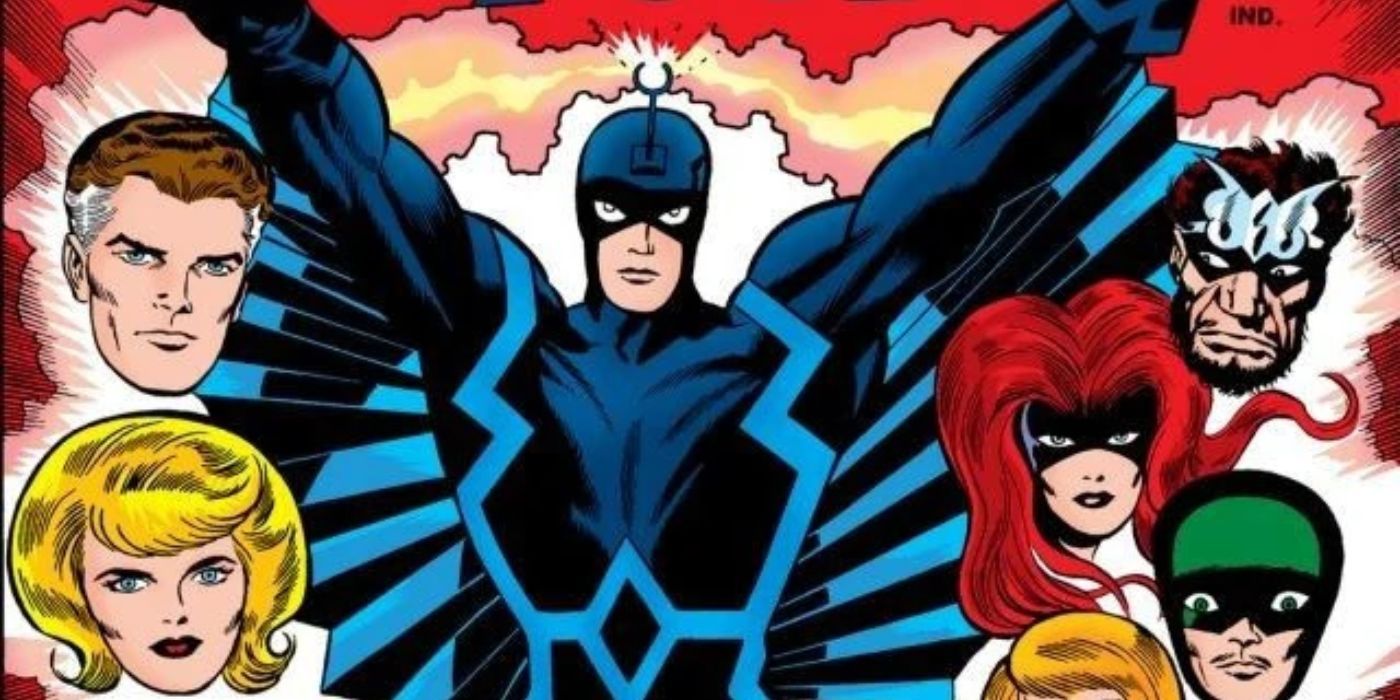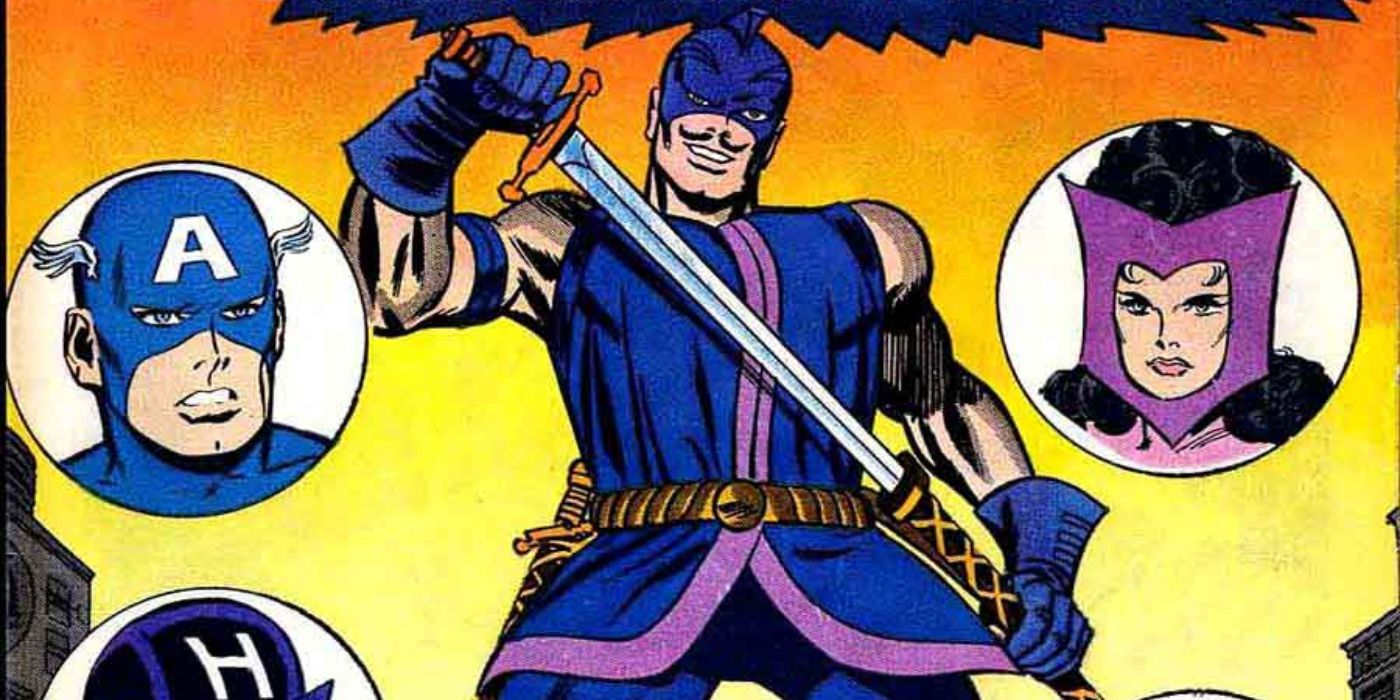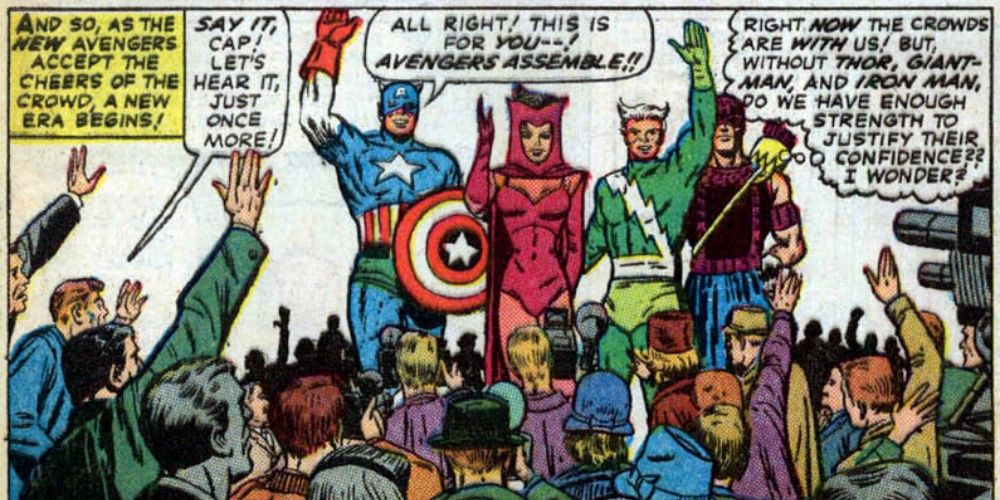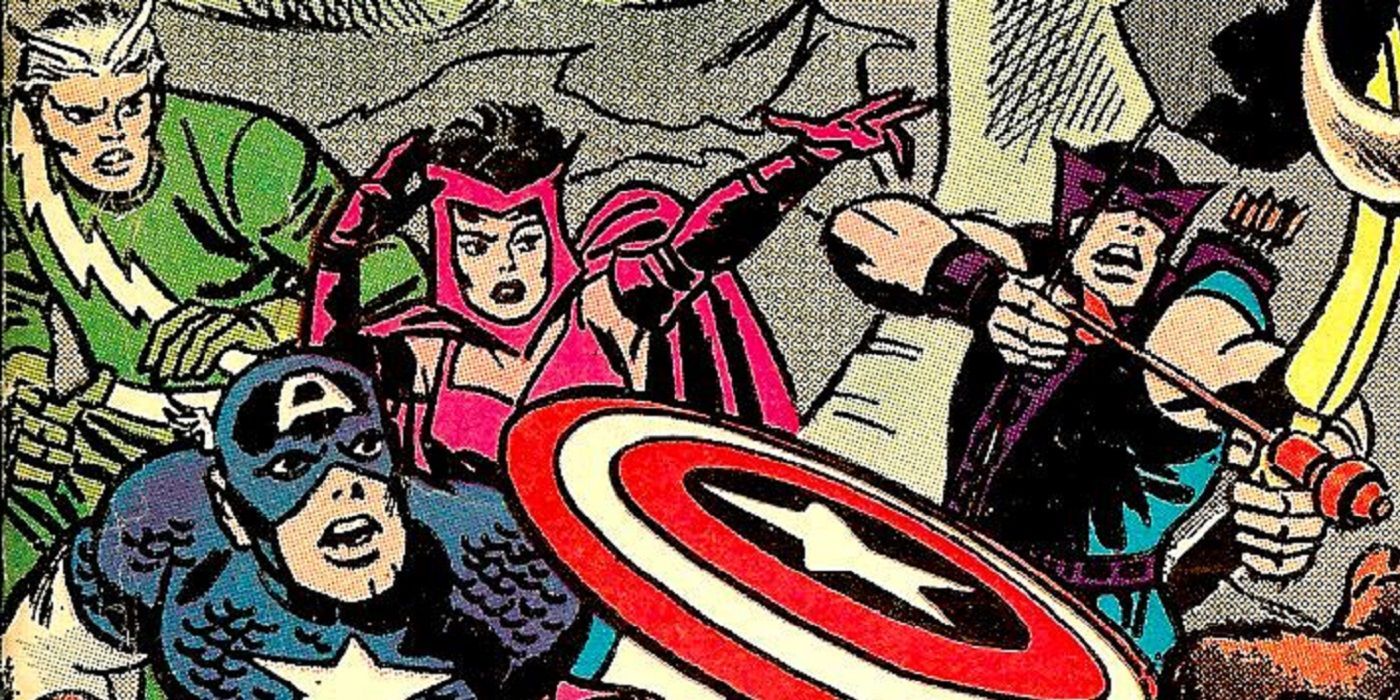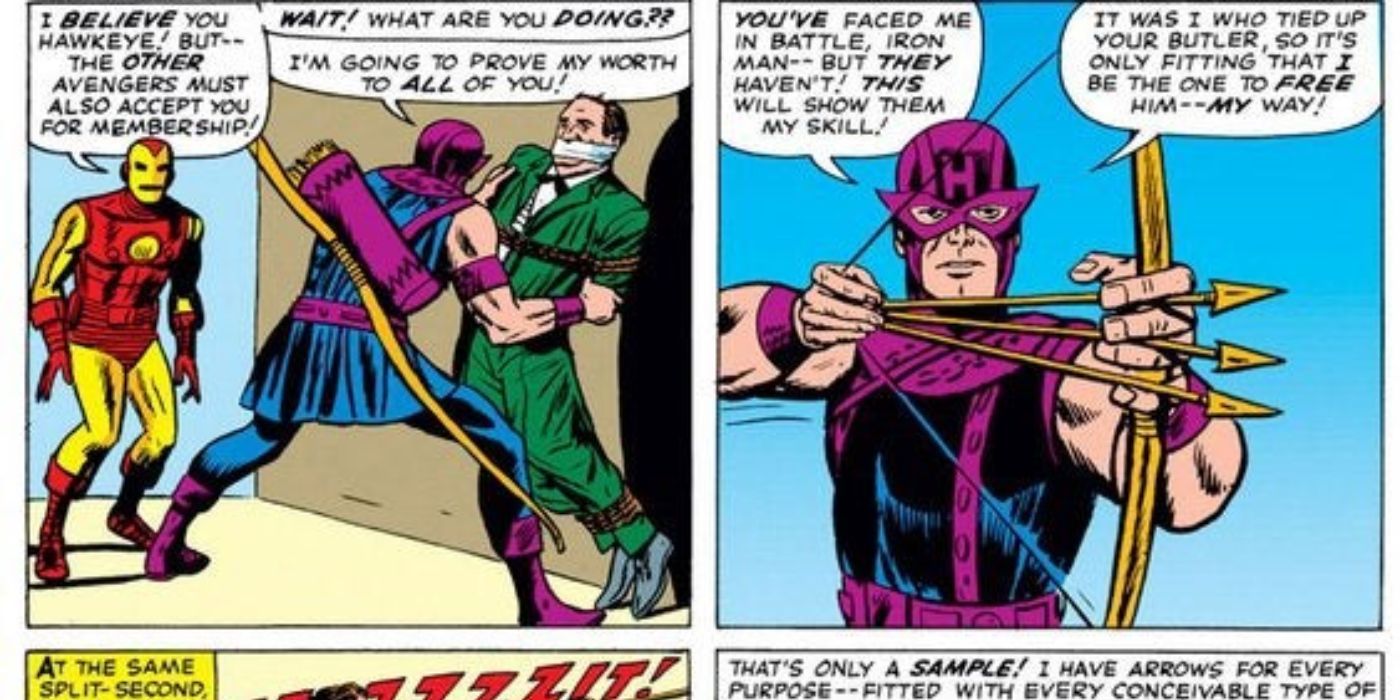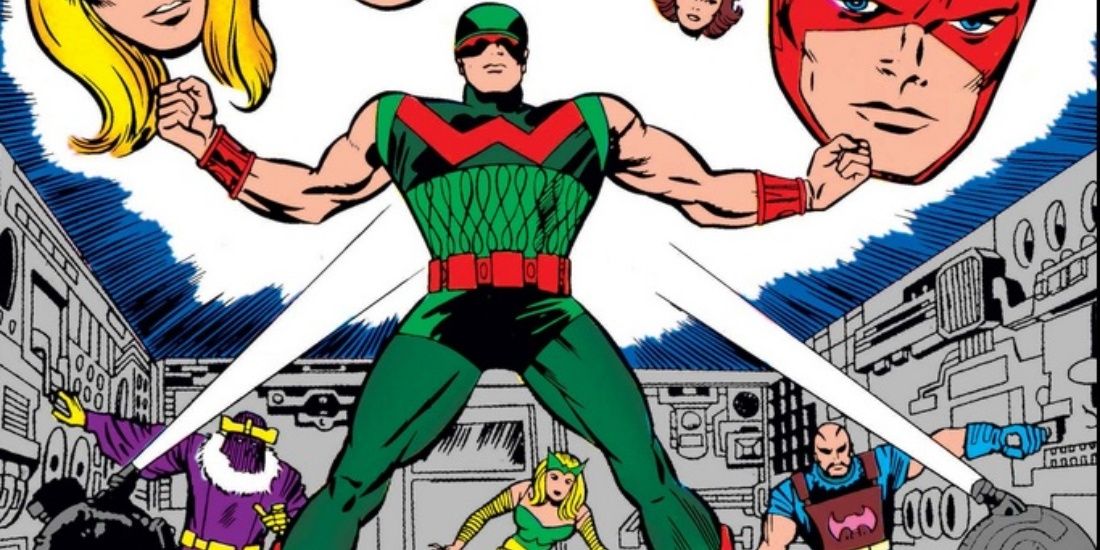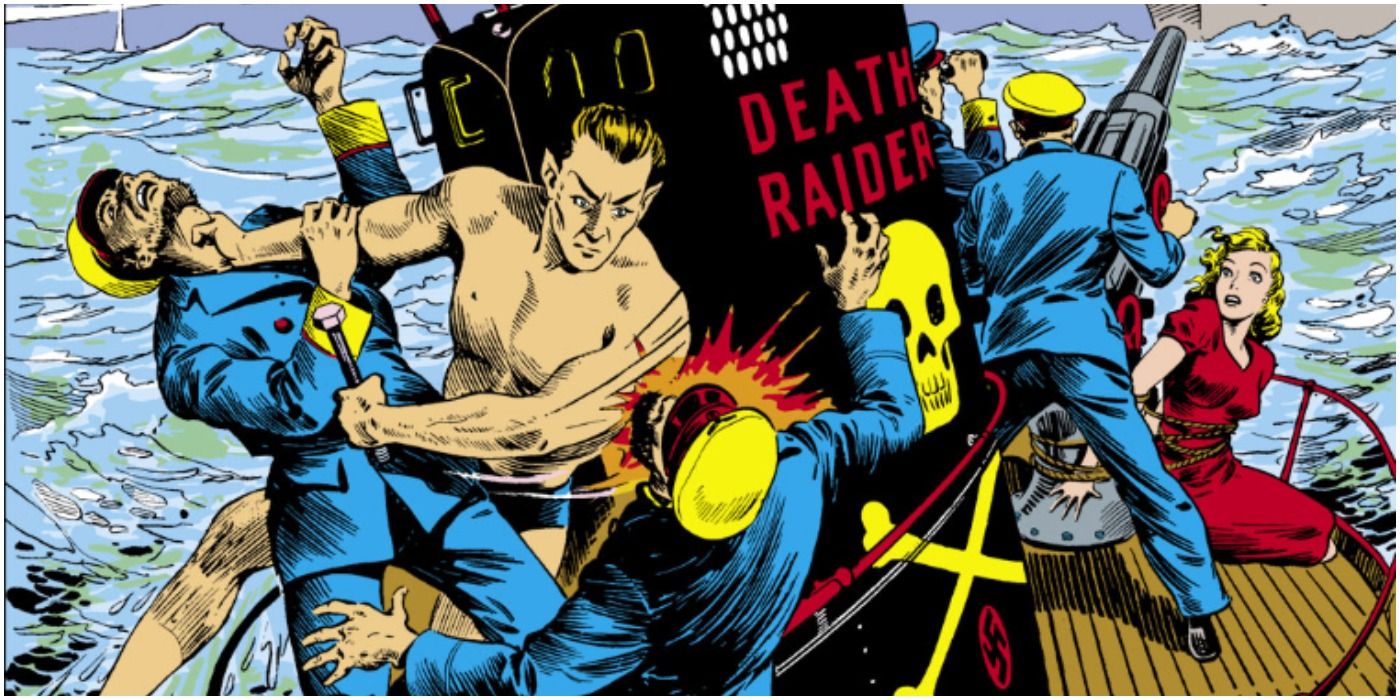In all of Marvel's best heroes-- Spider-Man, the Hulk, the X-Men-- there is a degree of internal torture that makes their stories compelling. For many of these heroes, part of that torture came from a sordid, or at least misunderstood, past that involved being perceived as a supervillain.
Being a former supervillain is so common for Marvel's heroes that it is almost a rite of passage. Fantastic Four allies, X-Men mainstays, and even a significant chunk of the Avengers' MCU team all began their careers as supervillains, though they soon transitioned to more permanent heroism. From lone mutants to entire families, plenty of Marvel's superheroes have been supervillains.
10 Mimic
Hero Turn in X-Men #27, written by Roy Thomas, penciled by Werner Roth, inked by Dick Ayers, and lettered by Sam Rosen
The X-Men are a complex group. As outcasts, they seek to protect other mutants and will often give them protection from the outside world. Such was the case for Calvin Rankin, the superpower-copying mutant known as Mimic. After a failed stint as a supervillain, Mimic sought acceptance by the original X-Men.
Mimic's journey with the team was short-lived. His joining of the group prompted the villainous Puppet Master to attempt to control him. Mimic escaped the influence of the criminal, but would leave the team two issues later when a run-in with the Super-Adaptoid left him powerless.
9 Black Widow
Hero Turn in The Avengers #30, written by Stan Lee, penciled by Don Heck, inked by Frank Giacoia, and lettered by Sam Rosen
As perhaps is befitting of a team called the "Avengers," a large majority of the team is made up of heroes wanting to make up for their past as villains. One such character is Black Widow, who originated as an Iron Man foe and super spy operative of the KGB.
Though Widow had long internally struggled against her masters, she was given the opportunity to break free in The Avengers #30. After leading the Swordsman and Power Man against the team, Widow's love for Hawkeye won out against her most recent instance of brainwashing. Moving forward, Widow would more closely associate with S.H.I.E.L.D. and the Avengers.
8 Silver Surfer
Hero Turn In Fantastic Four #49, written by Stan Lee, penciled by Jack Kirby, inked by Joe Sinnott, and lettered by Sam Rosen
Of all his many Marvel creations, Stan Lee's favorite was the Silver Surfer. The Sentinel of the Spaceways had a tragic, compelling backstory, and his wandering nature allowed Lee to wax philosophical in his adventures. Of course, those all began in Lee and Kirby's "Galactus Trilogy."
When Galactus first came to devour Earth, Silver Surfer acted as his herald. However, Alicia Masters and the Fantastic Four convinced him that the Earth was worth saving, and the Surfer rebelled against his master. Following that, the Surfer became committed to justice, exploring the universe as one of its foremost defenders.
7 Inhumans
Hero turn in Fantastic Four #47, written by Stan Lee, penciled by Jack Kirby, inked by Joe Sinnott, and lettered by Artie Simek
Though often perceived as a poor man's X-Men, the Inhumans are more a Machiavellian exploration of power and family in a monarchy. When the group first appeared (except Medusa, who originated as a member of the Frightful Four), they had been exiled from their homeland of Attilan by Black Bolt's cousin Maximus.
The team clashed with the Fantastic Four for the majority of their introductory arc, but the FF soon joined them to restore Black Bolt to the throne. The Inhumans would remain close with the superhero community following this, with members like Crystal joining the Avengers and Black Bolt the Illuminati.
6 Swordsman
Hero turn in The Avengers #20, written by Stan Lee, penciled by Don Heck, inked by Wally Wood, and lettered by Artie Simek
Sometimes, when a former villain joins the Avengers, they go right back to villainy. Such was the case for the Swordsman, former mentor of Hawkeye. A circus performer turned petty criminal, the Swordsman was compelled to join the Avengers to destroy them from within by the Mandarin.
Though he joined the team with the intention of taking it down, Swordsman soon came to admire the group. Swordsman attempted to remove the bombs he had placed around Avengers Mansion, but was caught by Captain America. Swordsman fled, though he would continue to oscillate between good and evil.
5 Quicksilver
Hero turn in The Avengers #16, written by Stan Lee, penciled by Jack Kirby, inked by Dick Ayers, colored by Stan Goldberg, and lettered by Artie Simek
As a member of Magneto's Brotherhood of Evil Mutants, Quicksilver and his sister, the Scarlet Witch, were always somewhat hesitant. Eventually, Pietro and Wanda Maximoff had had enough of Magneto's bullying and struck out on their own, seeking out the Avengers upon their call for new members.
Even after he left the team, Quicksilver's association with the Avengers would never truly end. However, neither would his difficulty in walking the heroic line. Though his intentions remained generally noble, Quicksilver's standoffish nature would continue to cause conflict with others.
4 Scarlet Witch
Hero turn in The Avengers #16, written by Stan Lee, penciled by Jack Kirby, inked by Dick Ayers, colored by Stan Goldberg, and lettered by Artie Simek
Like her brother, Scarlet Witch joined Cap's Kooky Quartet after ending her association with the Brotherhood of Evil Mutants. Also, like her brother, Scarlet Witch would continue to struggle with the line between heroism and villainy. However, Scarlet Witch's association with the team was far more lengthy.
Scarlet Witch would remain a key Avenger for much of the 60s, 70s, and 80s. When she did struggle with heroism, it was the result of her struggles with mental health and her father figure, Magneto. Though her road became more difficult following her intentional abandonment of villainy, Scarlet Witch never fully abandoned it.
3 Hawkeye
Hero turn in The Avengers #16, written by Stan Lee, penciled by Jack Kirby, inked by Dick Ayers, colored by Stan Goldberg, and lettered by Artie Simek
The final member of Cap's Kooky Quartet (and the first to join the new team), Hawkeye originated as an Iron Man villain. Like Scarlet Witch and Quicksilver, Hawkeye was reluctant in his criminality, primarily acting out of his affection for the Black Widow.
Hawkeye joined the Avengers in an act to be taken more seriously as a hero. His attempt was accepted by the team, though the brash archer would continually clash with Captain America. Hawkeye soon came to respect Cap and became one of the team's staunchest members, even leading the group at certain points.
2 Wonder Man
Hero turn in The Avengers #9, written by Stan Lee, penciled by Don Heck, inked by Dick Ayers, colored by Stan Goldberg, and lettered by Artie Simek
Some villains stay heroes after joining the Avengers. Others return to crime. In Wonder Man's case, the ionic superhero instead died. Like the Swordsman, Wonder Man joined the team to destroy it, though at the behest of Baron Zemo instead of the Mandarin.
Though he needed the expertise of Baron Zemo to keep him alive, Wonder Man turned on the nefarious Nazi in favor of the Avengers. Simon Williams died in the same issue he joined the team, though he would later be resurrected several times. The most lasting one saw him return to the Avengers as a full team member.
1 Namor
Hero Turn in Marvel Mystery Comics #4, written and illustrated by Bill Everett
Marvel's first superhero was also its first supervillain. After a debut that saw Namor violently kill several salvage divers in his quest to beat back the surface world, Namor spent a number of issues waging war on Earth's land-dwellers. This changed with the advent of World War II.
Creators like Bill Everett saw comics as an opportunity to sway public opinion against the Third Reich, and Namor's rampages soon became targeted at Nazis. Teaming up with the original Human Torch and Captain America, Namor fought on the side of good. Though always noble, Namor would continue to sway between superhero and supervillain.

